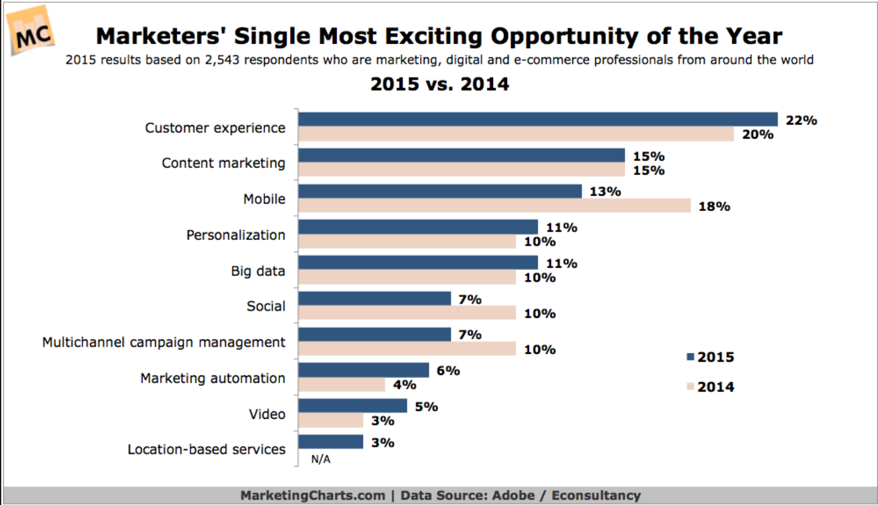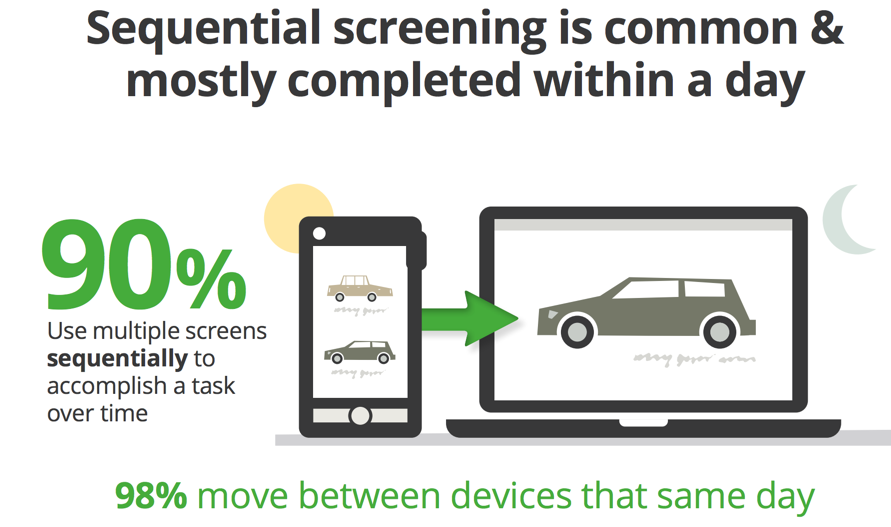Multi-device attribution analysis and how it works
Several years ago, the topic of mobile was huge. If you look at this data, it may indicate that marketers are not excited about mobile as an opportunity area, when compared to last year. I wonder why. Is it because the data is so bad, marketers and analytics folks couldn’t accomplish getting the mobile marketing right?

This research by Google (a while back in 2012) shows that in eCommerce purchase journey, multi-device touch points play a key role in how consumers navigate digital content to get to that final decision point to buy. “90% of customers use three different devices to complete a single task”.

What does your analytics say about your users? It is very likely that your mobile traffic has grown from prior years, but how significant is that traffic volume?
I also find it interesting that if you look at different acquisition channels, you might see a different mobile traffic distribution. This particular image shows, overall site traffic from mobile and tablet is X%, but when you look it by Google CPC (paid search ads), mobile and tablet visitors accounted for X% of its traffic.

Some of the key questions we need to be asking from this data are:
- Is your landing page optimized for mobile visitors or desktop visitors
- What does it mean to see different traffic volume in desktop Vs? mobile. Are mobile visitors exploring the product and desktop visitors are existing customers? Customers are in different part of their moments/journey so content should be optimized for that different moments.
- What kind of mobile ads is resonating with your users? Is it any different from the desktop ads? Mobile has a very small screen for users to view and recall the content within the banners. Are your users responding to the text or actual creative, are few key things to check if you want to optimize for the mobile visitors.
In order to attribute conversion of a user to its original touch point, you’re going to need to plan it well to capture the right data. A common tactic to do this is to make sure you’re able to stitch back your converted customer ID back to its original source or touch points, which could be either a campaign id, content viewed, etc. This visitor stitching technology is probably unique to various analytics vendors you work with, but you would want to make sure you have a strategy to do this right.
Tealium said this right in one of their product description:
“Typical analytics data often shows multidevice visitor interaction as coming from three visits and three different people, but, in reality, it is likely that those visits are from just one visitor using different devices.”
Once you’re able to normalize your data to be able to track your customer level data and stitch to user’s historical touch point data, then you apply whatever model you please to allocate conversion credits. First click, last click, linear, U shape, W shape, etc.
Would like to hear what you guys are doing to make multi-device attribution analysis better.
ZoomMetrix Newsletter
Join the newsletter to receive the latest updates in your inbox.